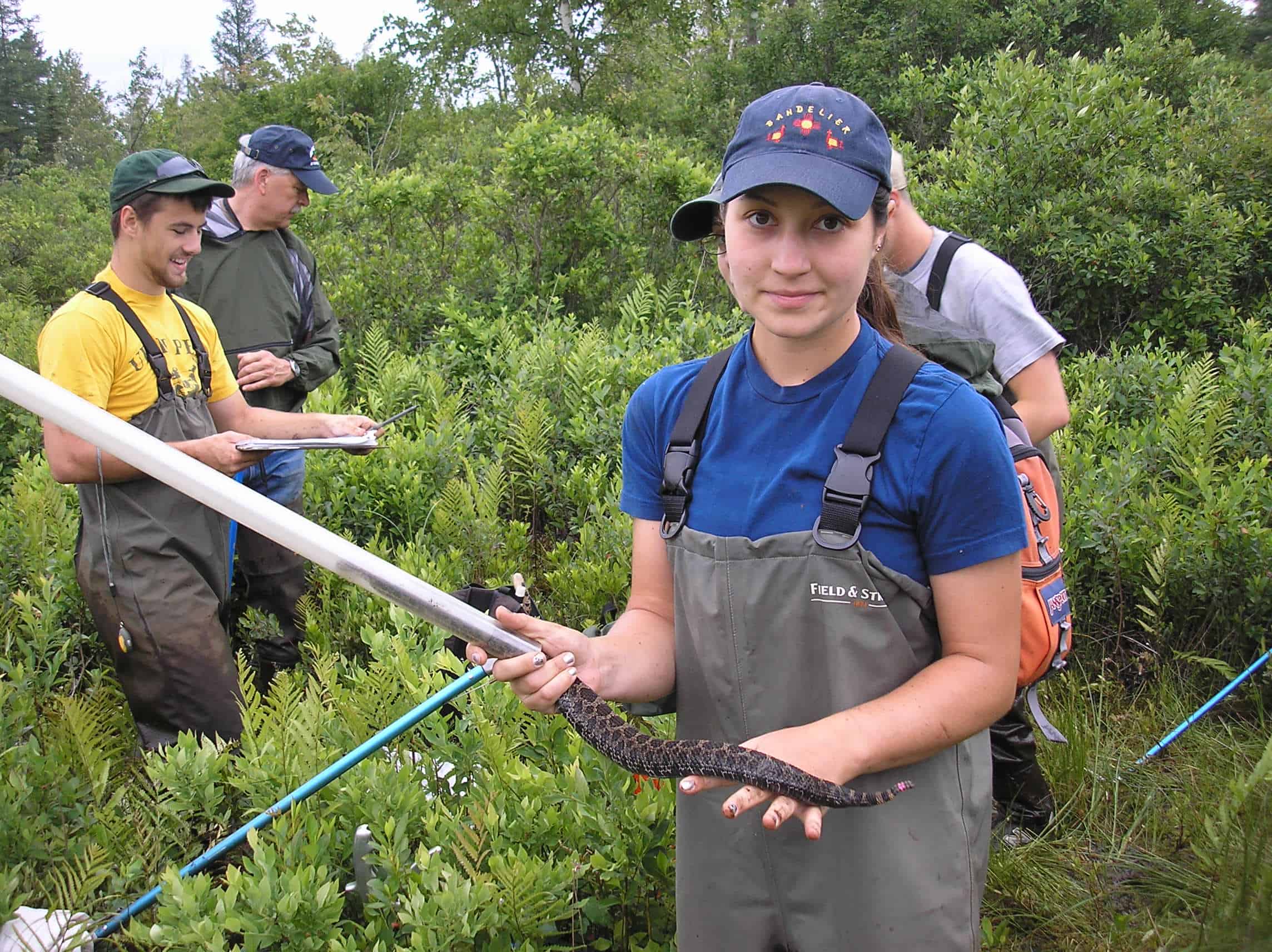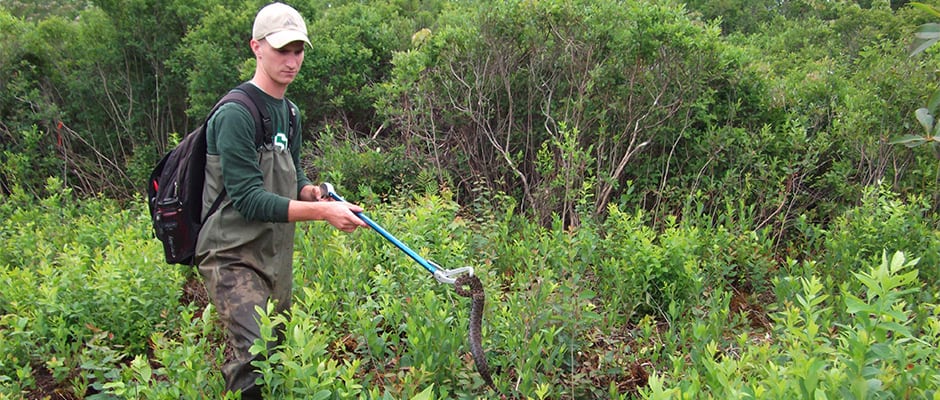Share this article
JWM Study: Getting the sun to shine down on rattlesnakes
The natural succession of tall, woody shrub vegetation in the last 50 or so years at an isolated wetland site in upstate New York has reduced the number of basking sites for eastern massasauga rattlesnakes (Sistrurus catenatus) that rely on the sun to regulate their internal body temperature.
“Thermoregulation is important to all snakes,” said Brent Johnson, a population biologist with Lincoln Park Zoo in Chicago and lead author of a study on the snakes’ basking sites published in the Journal of Wildlife Management. “It helps with their physiological processes of digestion, gestation, movement and shedding. For snakes in more northern regions such as upstate New York, there may only be limited times of the year that they’re going to achieve high body temperatures.”
A few years ago, the New York State Department of Environmental Conservation cut shrub vegetation and reduced the canopy cover in order to provide the snakes with more basking sites. Johnson and his colleagues were curious to see how the snakes responded to an increase in basking sites. As part of their recent study, they turned to experimental plots that had been managed for snakes over the course of three years — 2008, 2011 and 2012 — as well as plots that hadn’t been manipulated.

Researchers with State University of New York College of Environmental Science and Forestry and New York State Department of Environmental Conservation survey snakes in upstate New York. From left to right: Alex Robillard, Lance Clark and Laura Brown. ©Brent Johnson
The researchers then walked through the sites on a weekly basis in search of basking snakes, which they caught; measured for body temperature, length and weight; tagged and ultimately released.
The active season for the snakes is around mid-spring to mid-fall, according to Johnson, who was a graduate student at the State University of New York College of Environmental Science and Forestry in Syracuse at the time of the research. During the winter, they’re sequestered underground, but during the active season they’re able to forage and mate. Further, the females use this time when they are basking to ensure the gestation of their young.
After 150 snake sightings during the first field season and about 75 during the second field season — and a total of 29 tagged individuals — Johnson and his team determined the snakes were using the most newly created, open canopy plots the most. “This is a positive finding and suggests that reducing canopy cover is a strategy that at the very least the snakes will respond to,” Johnson said. “We would hope improving thermoregulatory opportunity for snakes might improve the ability of the females to gestate, and ensure proper development of their young.” Johnson added this might ultimately help improve the status of the species — listed as endangered in New York State and designated as a candidate for listing under the federal Endangered Species Act — by increasing the recruitment of their young into the breeding population.
Another interesting finding, according to Johnson, was that the managed plots seemed to facilitate active warming. “We observed snakes that were cooler in temperature than expected that were presumably using the plots to warm up and then retreat underground. This helped them achieve the temperatures they needed and to avoid predators the rest of the day. They didn’t need to be basking in the plots for hours on end.”
Header Image: Brent Johnson holds a massasauga with snake tongs. ©Brent Johnson








